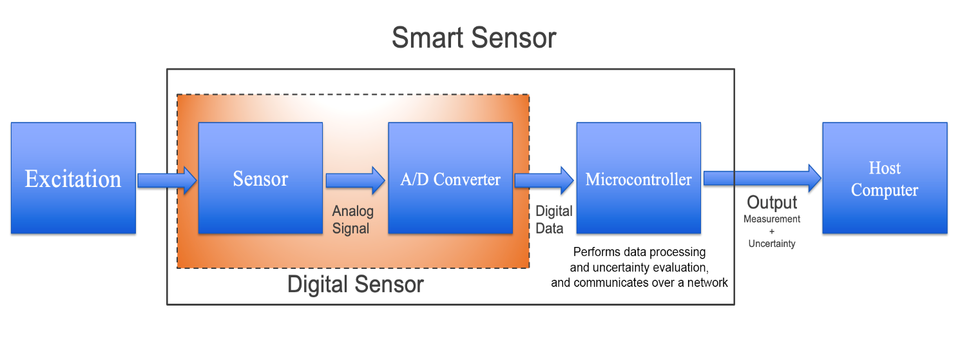On-Sensor Dynamic Uncertainty
MEMS-based digital transducers typically output a binary number representation for a measured excitation which is then read by a microcontroller. This binary representation of the measured excitation must then be converted to a measurand using a calibration factor. Depending on the application, the calibration factor used might be what is supplied by the manufacturer on the device data sheet along with its stated uncertainty. This approach may be acceptable for noncritical applications, such as where life and limb are not at stake. However, a more rigorous approach is to calibrate the sensor using accepted practices that are traceable to the SI. In the end, either the information from the data sheet or the traceable calibration must be stored on the host computer that is acquiring the data and using it to control processes or relay information.
We are investigating the concept of dynamic uncertainty to improve the accuracy and robustness of digital sensor networks. The digital smart transducer is integrated with a microcontroller that reads the binary data from the calibrated sensor, performs an analysis to determine the measurand and its instantaneous uncertainty, and communicates these values with a time stamp to the host computer. We postulate that communicating the measurement with its uncertainty from the sensor node could eliminate the need for the host computer to maintain a database of the sensor models and performance parameters while at the same time improving accuracy and maintainability. We are currently investigating this approach by implementing this protocol using calibrated triaxial accelerometers as a test case. We envision that this protocol could eliminate the need for the host computer(s) to keep track of individual sensor performance parameters and facilitate the functionality to seamlessly upgrade sensors in the network.

Contacts
-
(301) 975-3898

